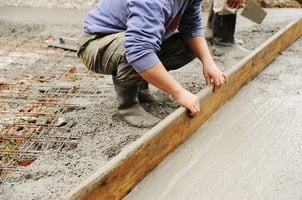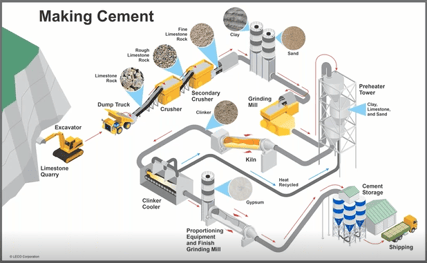There is no question about it: concrete is the most ubiquitous and versatile building material in the world. While the basic recipe is simple cement, aggregate, water, and air the variations and additions to this recipe can create infinite types of concrete. Knowing that your concrete is capable of withstanding the forces that will be acting upon it is vit al to the success of any concrete construction process.
al to the success of any concrete construction process.
The process of making cement begins when limestone is quarried and crushed. Clay and sand are added, and the mix is ground and processed through a kiln. What emerges from the kiln is called clinker. It is cooled, crushed, and mixed with gypsum to produce the final Portland cement used around the world.
 This clinker is an intermediate product in the cement-making process. It may seem counter-intuitive on the surface to analyze this and not the final Portland cement, but there are multiple reasons for it. Portland cement is a fine, powdery material that is much harder to analyze metallographically, whereas clinker is a solid, rock-like material that lends itself well to such an analysis. It also allows for a continuous look at the cement-making process, allowing for real-time adjustments as needed. Finally, by analyzing the clinker before it is finalized into cement, it provides a good estimation of the quality of the final cement product. This allows for defective batches to be rejected before they become poor-quality cement, saving time and money.
This clinker is an intermediate product in the cement-making process. It may seem counter-intuitive on the surface to analyze this and not the final Portland cement, but there are multiple reasons for it. Portland cement is a fine, powdery material that is much harder to analyze metallographically, whereas clinker is a solid, rock-like material that lends itself well to such an analysis. It also allows for a continuous look at the cement-making process, allowing for real-time adjustments as needed. Finally, by analyzing the clinker before it is finalized into cement, it provides a good estimation of the quality of the final cement product. This allows for defective batches to be rejected before they become poor-quality cement, saving time and money.
Listen to LECO’s Metallurgist, Steve Reilly, as he goes into detail on best practices for performing a metallographic analysis of cement clinkers in this on-demand webinar.




